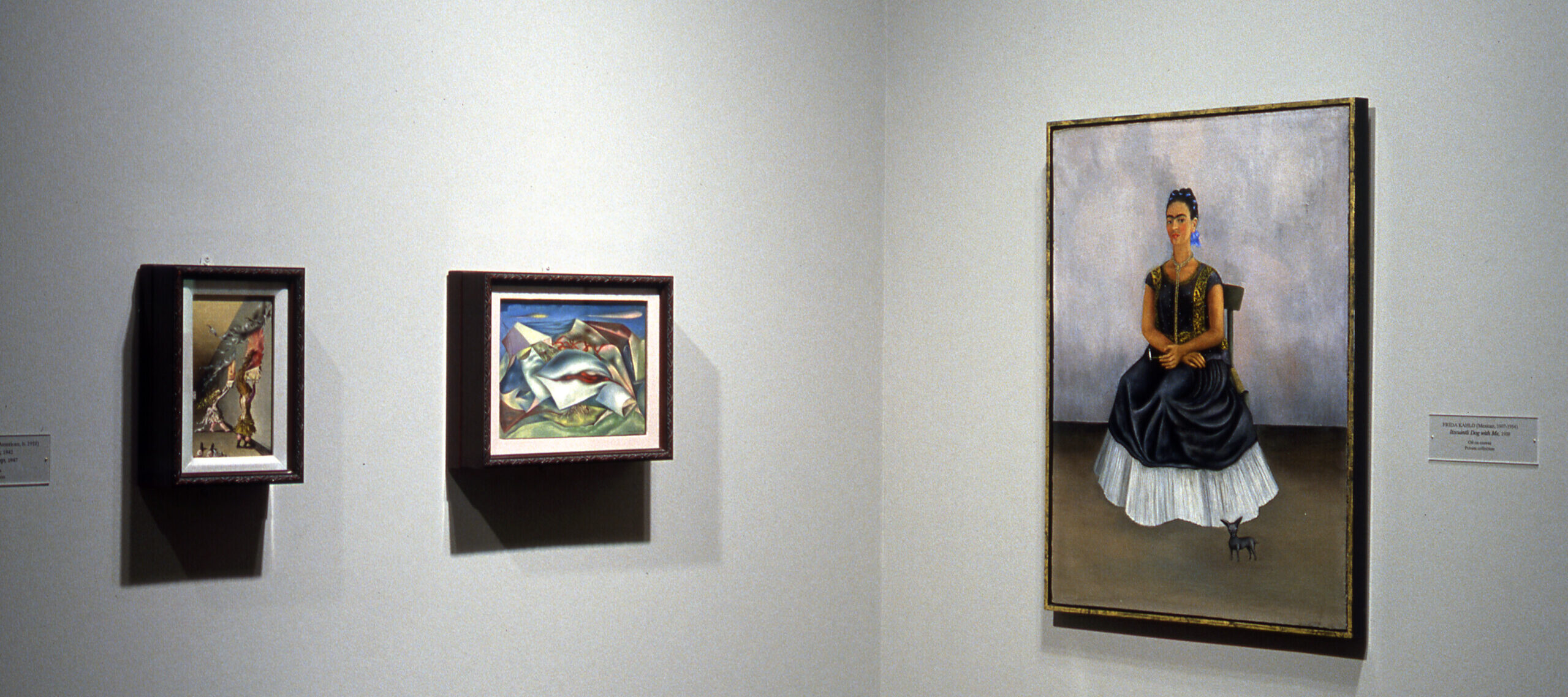Dorothea Tanning was an American woman artist unto herself. Overflowing with spirited opinions and ambition, she displayed an eccentric artistic soul that endured for over six decades and earned her a name in the ranks of O’Keeffe, Bourgeois, Nevelson, and Kahlo.
Considered a child prodigy, Tanning had a voracious appetite for reading and drawing. She moved from her small Illinois hometown first to Chicago, then New Orleans, and finally New York in 1935. Fascinated by the possibilities presented in the 1936 exhibition Fantastic Art, Dada, and Surrealism at The Museum of Modern Art, Tanning began painting highly representational fantasy worlds. Her typical early subject, the ‘girl-child,’ was either nude or half-dressed, alone or erotically entangled in groups, and placed in barren landscapes or Victorian interiors. These works, notably the self-portrait Birthday, 1942, caught the attention of art critics, including prominent New York art dealer Julien Levy, and marked her entry into the Surrealist world.
In preparation for Peggy Guggenheim’s highly important Exhibition by 31 Women, 1943, Tanning met Dadaist icon Max Ernst and quickly became part of the band of Dada and Surrealist émigrés in New York. Tanning and Ernst wed in 1946; theirs was a long harmonious marriage, for nine years in Arizona, then in Paris for almost thirty more. During this time Tanning exhibited her paintings widely in France and abroad, while experimenting with prints, costume and set design, and fabric sculpture, twisted figures and partial body parts made from textiles. As her career developed, her works became more painterly and the figures and settings more generalized. Her series of large, semi-abstract compositions of amorphous shapes focused on prismatic light and energy. Tanning was devastated by Ernst’s death in 1976 and returned to New York in 1980.
Tanning tolerated nothing of the lexicon of feminism; not since her 20s had she endured the label ‘woman artist’. She shook this off, including the continuing Surrealist label, or being called the sole Surrealist surviving into the twenty-first century. Always a self-determining artist, usually with private studio space, Tanning pointed out with fervor that she progressed beyond Surrealist painting for fifty years. She turned to writing during the latter part of her life due to frail health and wrote two autobiographies, a novel, and several highly acclaimed poems. Her poem “No Palms” was selected for inclusion in The Best American Poetry 2000.
